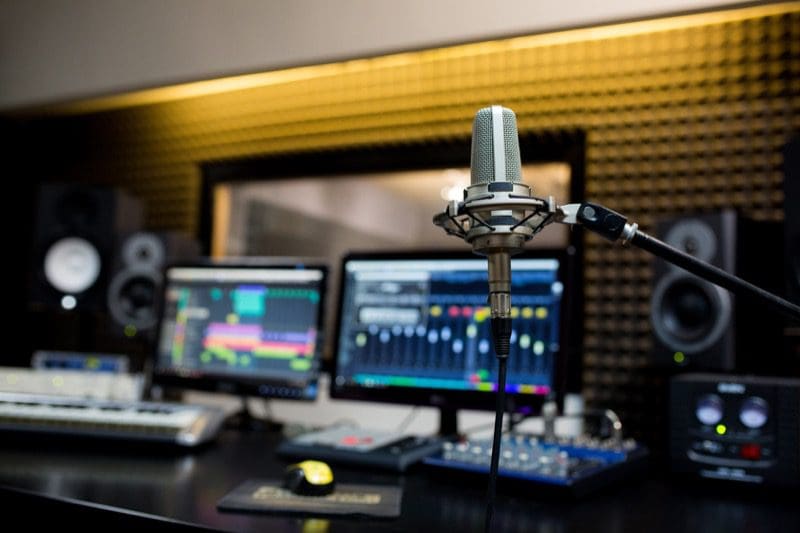 Understanding how to recreate music in our vehicles is a complicated science. Balancing speaker sizes and locations with the goal of recreating what the recording engineer heard in the mastering studio or, at the very least, making your system enjoyable isn’t always easy. We want to take a look at the physics behind sound and explain a few fundamentals of how sound works to help you understand the terminology used in the automotive audio industry and why a balanced system design with the proper equipment is crucial to creating an enjoyable and realistic listening experience.
Understanding how to recreate music in our vehicles is a complicated science. Balancing speaker sizes and locations with the goal of recreating what the recording engineer heard in the mastering studio or, at the very least, making your system enjoyable isn’t always easy. We want to take a look at the physics behind sound and explain a few fundamentals of how sound works to help you understand the terminology used in the automotive audio industry and why a balanced system design with the proper equipment is crucial to creating an enjoyable and realistic listening experience.
What is Sound and How Does It Work?
 At the most fundamental level, sounds are vibrations that travel through air and other mediums. These vibrations are detected by our ears, which in turn convert them to minute electrical signals that our brains interpret.
At the most fundamental level, sounds are vibrations that travel through air and other mediums. These vibrations are detected by our ears, which in turn convert them to minute electrical signals that our brains interpret.
Because we have two ears, our brain can determine the location of a sound source by analyzing the arrival time and frequency content of what each of our ears hear. For example, a sound that is created directly in front of you will arrive at both ears simultaneously and with equal frequency response. A sound that is created directly to the right of us will arrive at our right ear before our left. The amplitude of the sound will be slightly higher in the right than in the left. Also, the high-frequency content of the sound that arrives at our left ear will be different. We learn as we grow up to correlate different visual cues with what we hear to develop a sense for where the sound comes from.
Recreating Sound and Music
Much like the way signals from our auditory nerves send electrical messages to our brains, sound waves (or vibrations) can move a microphone diaphragm to create an electrical signal that a recording device can store for playback at another time. The image below is an electrical representation of someone saying the word hello. You can listen to the original audio file by clicking here.
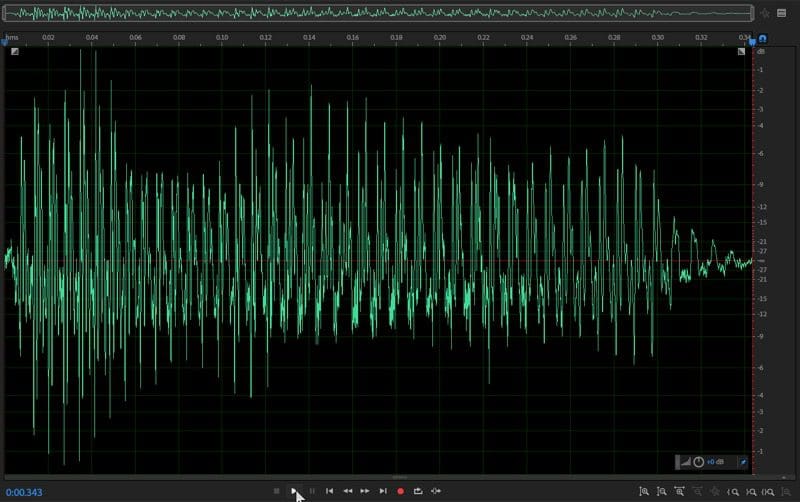
The image shows us a graph of voltage versus time, with voltage on the vertical scale and time on the horizontal. The amplitude (level) of the signal determines its intensity (or loudness). The speed at which the signal changes determines frequency. Understanding the interactions of simultaneous frequencies is fundamental to understanding why similar sound sources produce different sounds.
The graph below shows the average frequency content of the person saying hello. You can hear the audio file by clicking here
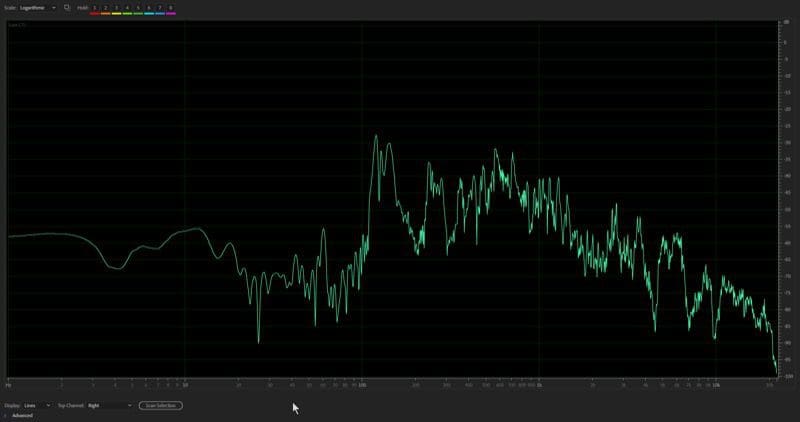
When a performer is singing or someone is playing an instrument, the sound of that instrument is determined by its harmonic content. For example, a Middle C on a piano and Middle C on a guitar are based around similar frequency content. The following recordings show the majority of energy at 261 and 522 Hz. Here is the Middle C note on the piano and here is the note on the guitar. You can see that the average harmonic content of each is quite different.
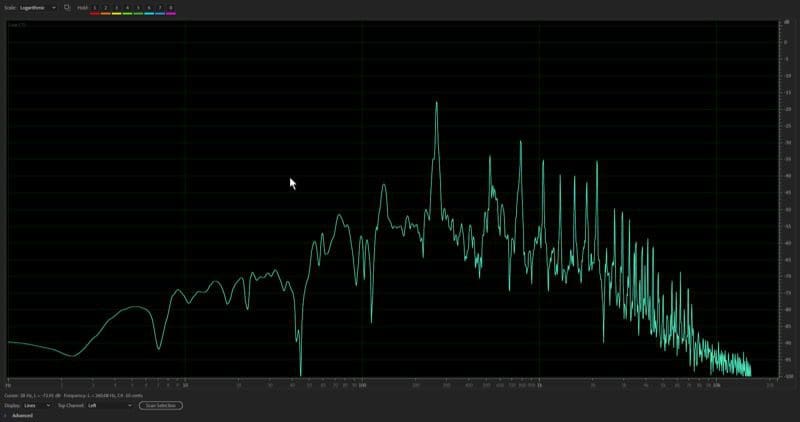
Average spectral content of Middle C as played on a piano.
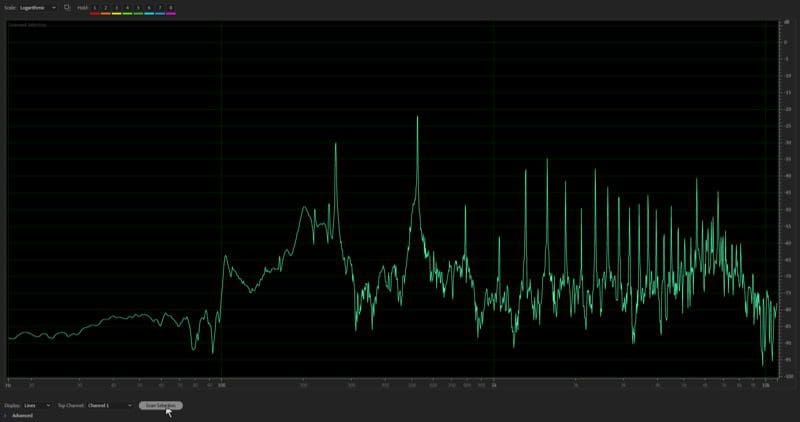
Average spectral content of Middle C as played on a guitar
If we focus on just the main 261 and 522 tones with a steep band-pass filter set to 120 and 650 Hz, the two instruments start to sound very similar.
As you can hear, the “sound” of an instrument depends heavily on its harmonic content and relative balance (amplitude) of that information.
Car Stereo System Frequency Response
So, why are we dwelling so much on the fact that sound of different instruments and performers is based heavily on harmonic frequency content? When it comes to time to design an audio system for your car, truck, boat or motorcycle, it’s important that the system performs evenly across the entire audio spectrum in order for your music to sound realistic.
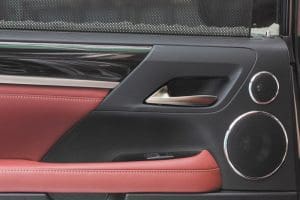 To achieve this goal, you need at least a two-way speaker system. Because no single speaker can reproduce the entire audio spectrum (from deep bass to the highest highs) with good efficiency and dispersion, we dedicate different size drivers to different frequency ranges. In the simplest of systems, you’d have woofers (not to be confused with subwoofers) that play frequencies below about 3,000 Hz. For the top end, you’ll need tweeters to cover the frequencies above 3,000 Hz.
To achieve this goal, you need at least a two-way speaker system. Because no single speaker can reproduce the entire audio spectrum (from deep bass to the highest highs) with good efficiency and dispersion, we dedicate different size drivers to different frequency ranges. In the simplest of systems, you’d have woofers (not to be confused with subwoofers) that play frequencies below about 3,000 Hz. For the top end, you’ll need tweeters to cover the frequencies above 3,000 Hz.
For even better performance, you may want to add a subwoofer to the system to relieve the woofer of the task of reproducing those frequencies below about 80 Hz and dedicate them to a larger speaker that is more efficient in that range. It also takes a lot of energy to reproduce bass information, so you’ll want a moderately powerful amplifier available to drive that subwoofer. If you have 25 watts of power available to drive your left and right speakers, 250 watts would be a good starting point for your subwoofer.
Creating an Amazing Mobile Audio System
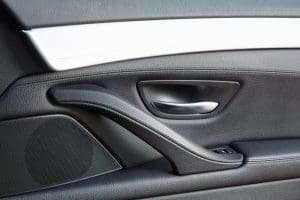 The last step in creating a car stereo system that sounds good is to ensure that the placement of each of the speakers in the vehicle allows for equal and balanced frequency response from both sides of the car. This is crucial to creating a realistic listening experience. With that said, most of us start with a set of coaxial or component speakers in the stock door locations. This puts our listening position quite far off-axis to the left side driver as compared to the right. For most people, the sound isn’t too bad and they can live with the minor differences, especially if the tweeters are angled up and rearward to deliver similar high-frequency response.
The last step in creating a car stereo system that sounds good is to ensure that the placement of each of the speakers in the vehicle allows for equal and balanced frequency response from both sides of the car. This is crucial to creating a realistic listening experience. With that said, most of us start with a set of coaxial or component speakers in the stock door locations. This puts our listening position quite far off-axis to the left side driver as compared to the right. For most people, the sound isn’t too bad and they can live with the minor differences, especially if the tweeters are angled up and rearward to deliver similar high-frequency response.
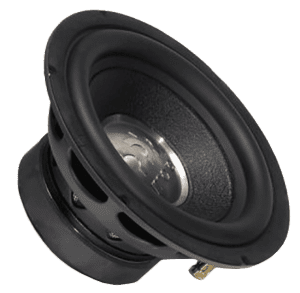 If you want a truly enjoyable and realistic listening environment, consider adding a digital signal processor that allows your installer to fine-tune the output of the left and right speakers at all frequencies so that they sound the same. If your installer knows how to sprinkle in the right amount of time delay so that the output of the right speaker arrives at your ears at the same time as the left, well, chances are you’ll enjoy an impressive soundstage in the vehicle. Your music will be spread evenly from left to right, and with the right recordings, you’ll be able to pick out each instrument or performer and their relative location to one another cross this soundstage.
If you want a truly enjoyable and realistic listening environment, consider adding a digital signal processor that allows your installer to fine-tune the output of the left and right speakers at all frequencies so that they sound the same. If your installer knows how to sprinkle in the right amount of time delay so that the output of the right speaker arrives at your ears at the same time as the left, well, chances are you’ll enjoy an impressive soundstage in the vehicle. Your music will be spread evenly from left to right, and with the right recordings, you’ll be able to pick out each instrument or performer and their relative location to one another cross this soundstage.
Experience Amazing Audio in Your Car Today!
Now that you have a basic understanding of how sound, works, it’s time to upgrade your car audio system. Drop by your local mobile enhancement retailer and ask about a subwoofer, a DSP-equipped amplifier and new speakers. The difference you’ll hear with each of these upgrades will blow your mind and put a smile on your face.
This article is written and produced by the team at www.BestCarAudio.com. Reproduction or use of any kind is prohibited without the express written permission of 1sixty8 media.
Leave a Reply